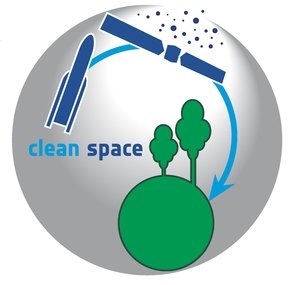International consensus on debris threat - part 2
Understanding debris
ESA was a pioneer in the field of debris research.
Together with NASA, ESA is a founding member of the Inter Agency Debris Coordination Committee (IADC), a technical body for space debris experts from, today, 13 space agencies.
IADC formulated and published space debris mitigation guidelines more than a decade ago that are now used in most national standards.
Since 2002, ESA has been monitoring critical conjunctions between its spacecraft and the approximately 20 000 objects that are regularly tracked in orbit. A team of experts at ESA’s European Space Operations Centre, Darmstadt, Germany, watches over a fleet of, currently, 19 European spacecraft around the clock and triggers several collision avoidance manoeuvres per year.
With this perspective, ESA has identified the need for Europe to obtain information on such objects in space through its own surveillance and tracking system. Almost 10 years ago, ESA launched an ambitious space situational awareness programme that is meant, in part, to design and develop the required sensor systems in Europe.
Following the rules
ESA has set itself high standards in implementing and executing space debris mitigation guidelines.
For example, ESA’s Vega launchers have conducted all flights in full conformance.
ESA also takes action to implement measures even for mission that were designed and launched long before current mitigation guidelines were adopted.
ESA’s ERS-2 satellite, launched in 1995, was successfully deorbited in 2011, while Integral and the four Cluster satellites have been manoeuvred so as to safely reenter when they reach end of life in a few years.
Compliant disposal measures have also been taken for missions operating near the Earth–Sun Lagrange points, some 1 million kilometres away.
Cleaning space
To ensure the competitiveness of European industry in implementing mitigation measures and facilitating adherence to international guidelines, ESA, within its Clean Space Initiative, has established the CleanSat project.
CleanSat has a coordinated approach that involves ESA, system integrators and equipment manufacturers, and is developing and implementing innovative mitigation technologies such as deorbiting systems, demisable equipment, passivation solutions for propellant and power systems.
These technologies reduce the risk on the ground upon atmospheric reentry and increase the reliability of the essential post-mission disposal functions of satellites.
Applicable technologies to approach, capture and safely deorbit a large and massive target object are being studied in ESA.
These range from sensors for the inspection of defunct space objects and their dynamics, capture technologies including nets, robotic arms and harpoons, up to system aspects of a removal mission.
e.Deorbit, a demonstration mission for the removal of a large ESA-owned target object has now reached a high maturity level of preparation.
With the development of these technologies and their applications for in-orbit servicing to be provided by future ‘space tugs’, ESA is also paving the way for new business opportunities for European Industry.
Debris in a nutshell
Significant progress has been made in fully understanding the extent of the debris problem.
The progress made by European actors in this field is notable. Space surveillance radars are under development in many European countries and laser technology promises high-precision tracking of space debris objects.
Since 1957, more than 5250 space launches have led to an on-orbit population today of more than 23 000 tracked debris objects.
Only about 1200 are functional spacecraft. The remaining are classified as space debris and no longer serve any useful purpose. A large percentage of the routinely tracked objects are fragments from the approximately 290 breakups, explosions and collisions of satellites or rocket bodies that are known to have occurred.
An estimated 750 000 objects larger than 1 cm and a staggering 166 million objects larger than 1 mm are thought to reside in commercially and scientifically valuable Earth orbits.
Owing to relative orbital speeds of up 56 000 km/h, even centimetre-sized debris can seriously damage or disable an operational spacecraft, and collisions with objects larger than 10 cm will lead to catastrophic break-ups, releasing clouds of hazardous debris fragments which will go on to cause further catastrophic collisions, potentially leading to an unstable debris environment in some orbit regions known as the Kessler syndrome.
Regular updates on these objects via continuous space surveillance is required to support operational collision avoidance that has now been presented as daily routine practice by many space operators.





